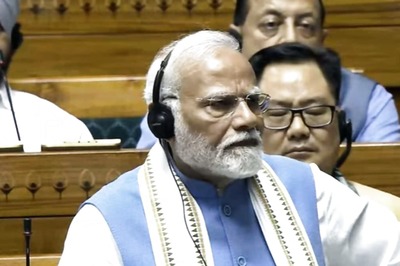
views
The Indian Institute of Technology (IIT) Guwahati researchers have developed a smart window materials for automatic climate control of buildings. Designed by Dr Debabrata Sikdar, Assistant Professor, Department of Electronics and Electrical Engineering along with research scholar Ashish Kumar Chowdhary, the smart window can effectively control the amount of heat and light passing through it in response to an applied voltage.
The smart window materials would be helpful in developing efficient automatic climate control systems in buildings and would find applications for efficient automatic climate control in vehicles, locomotives, airplanes and greenhouses of the future. The results of the study have been published in the journal, Solar Energy Materials and Solar Cells.
“There has been increased attention to sustainable architectural designs for better light and heat management in buildings in recent years, and deploying smart windows is the first step for such structures,” said Sikdar in an official press release.
The design of smart windows that are tuneable for all-weather conditions is challenging. The IIT Guwahati team has designed smart window ‘glasses’ using noble metals as well as relatively inexpensive alternatives that can dynamically control the intensity of transmitted solar radiation, depending upon the weather/climate condition, added the release.
“We have proposed an electro-tuneable glass made of two ultra-thin metal layers sandwiching an electro-optic polymer whose refractive index can be changed by applying a small voltage, which allows filtering of visible and infrared radiation,” said Ashish.
“At present, the COVID-19 pandemic has imposed an unprecedented risk of cross-infections through aerosols transmission in public buildings such as healthcare centres, offices, transportation systems, workshops, laboratories and food storage facilities etc., where central air-conditioning systems are in use. We believe that our smart windows can provide an alternative solution for maintaining ambient indoor temperature and lighting inside a building or a vehicle by integrating those with usual glass windows or walls, thereby reducing the need of air-conditioning systems,” added Sikdar.
Read all the Latest News, Breaking News and Coronavirus News here. Follow us on Facebook, Twitter and Telegram.




















Comments
0 comment